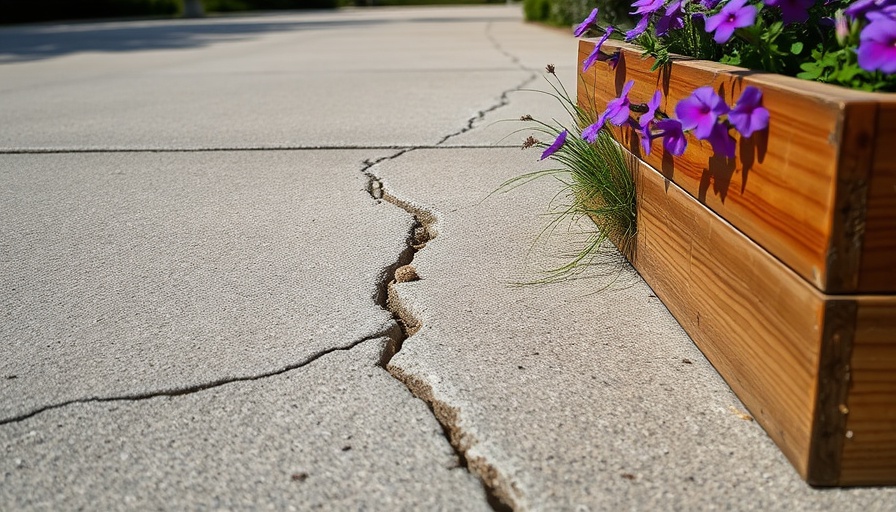
Understanding Driveway Cracks: A Deep Dive
Driveway cracks are more than just an aesthetic nuisance; they can signify deeper issues within your concrete foundation. Various factors contribute to the deterioration of driveways, including weather conditions, improper installation, and even tree roots pushing beneath the surface. Understanding these causes is essential for homeowners in the MidSouth, where seasonal changes can exacerbate such damage.
The Importance of Timely Repairs
Letting cracks go unrepaired can lead to more significant problems down the line. Water can seep into the cracks, leading to freezing and thawing cycles that further expand the damage. Additionally, a neglected driveway can significantly reduce your property’s value. By addressing these cracks proactively, not only can you maintain curb appeal, but you'll also avoid more extensive repairs that could be costly and time-consuming.
Your DIY Guide: Fixing Driveway Cracks
Follow these six easy steps to effectively repair your driveway cracks, keeping your property looking its best:
1. Choose Your Filler Wisely: Self-leveling fillers are ideal for narrow, irregular-shaped cracks, while non-sag fillers work best in deeper, wider cracks. Remember, understanding your filler types ensures a more durable repair.
2. Prepare the Area: Clear out any debris using a shop vac or leaf blower. A clean surface is crucial as it promotes better adhesion of the filler.
3. Fill the Cracks: Apply your chosen concrete crack filler, ensuring it fills the space adequately. Consider using a backer rod for deeper voids. This supplies a solid foundation for your filler and prevents it from sinking.
4. Smooth the Surface: Use a trowel or your finger to smooth the filler out and make it flush with the surrounding concrete. This will give your driveway a more finished look.
5. Monitor the Weather: Timely application is vital; ensure temperatures remain steady for 24 hours post-application to allow for proper curing. Rain can wash away the filler before it sets.
6. Maintain Your Driveway: Once the repairs are complete, consider sealing your driveway every few years. A sealant can prevent water and debris from penetrating your concrete, extending its life.
Emotional Impact: Why Your Home Matters
For many homeowners, a driveway is more than just a place to park—it is the welcome mat to your home and your sanctuary. A well-maintained driveway reflects an individual's commitment to their living space and overall well-being.
Environmental Considerations in Repairing Concrete
Choosing eco-friendly materials for your driveway repair can minimize your environmental impact. Look for products that utilize sustainable resources or are free from harmful chemicals.
Future Trends in Driveway Maintenance
As concerns about sustainability grow, more homeowners are looking toward green products and methods for home maintenance. In the future, we expect to see innovations in eco-friendly sealers and fillers that offer not just durability but also minimize environmental impact.
Conclusion: Take Action Today!
Driveway maintenance is an essential part of homeownership that promotes the value and safety of your property. By investing just a few hours and moderate costs now, you can prevent larger issues from creeping up later. So collect your tools, select your materials, and take the plunge—your driveway (and home) will thank you!
 Add Row
Add Row  Add
Add 



Write A Comment